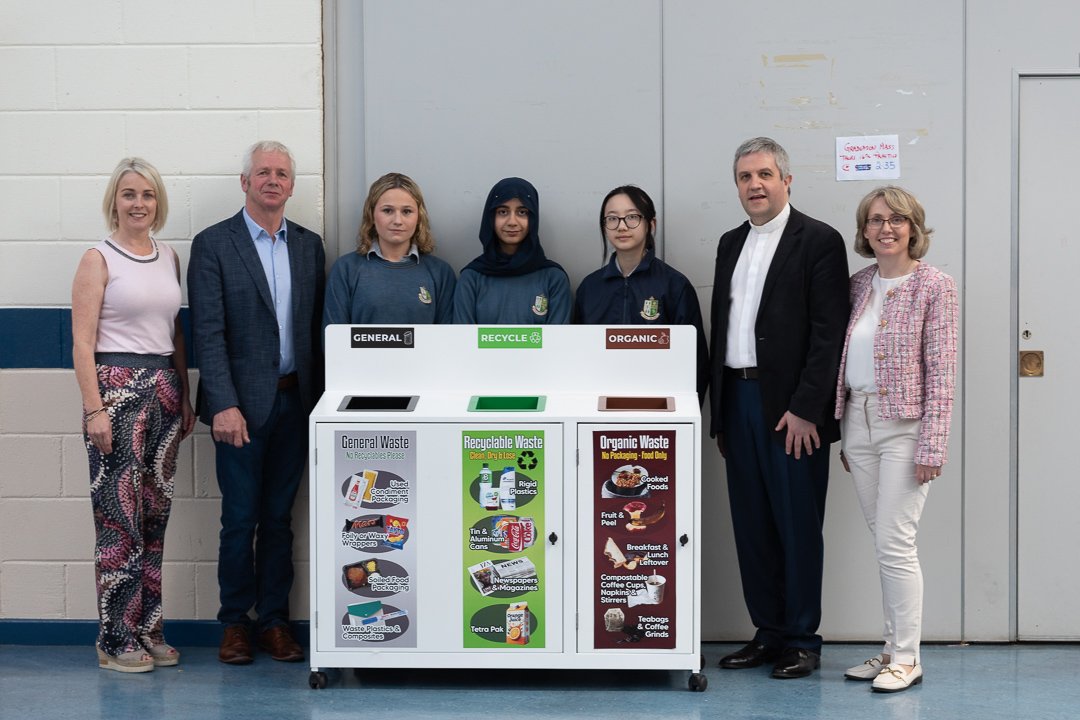St. Nathy’s College Biodiversity Day of Action
Art Work by St. Nathy’s Students
A big ‘thank you’ to St Nathy’s College for inviting me to their ‘Biodiversity Day of Action’ and to Caroline O’Doherty for featuring my workshop in her Irish Independent Article.
During my workshop I explored why hope is a crucial motivator for co-creating change in the face of an environmental crisis.
Six important themes emerged, which I intend to investigate further:
There is an urgent need to address the mental and emotional consequences of ‘loss of hope’ among young people.
Hope is a more sustainable emotion than anger.
The debilitating and demotivating consequences of eco-anxiety can undermine collective action.
Schools need to provide opportunities for their students to address eco-anxiety and stress.
Contemplative practices can have a significant impact on reducing the symptoms associated with eco-anxiety and stress.
‘St. Nathy’s Day of Action’ provides us with an excellent case study on how to raise awareness and cultivate hope through positive local action.
Art Work by St. Nathy’s Students
The Importance of HOPE
During my workshop, I asked students if they felt hopeful about the future of the environment. Not a single hand was raised. When I asked if they had lost all hope, most hands went up.
This stark response highlights a serious issue that needs urgent attention!
Why is hope important?
Hope is a crucial motivator for collective action, especially in addressing environmental crises (ref.1). It is more than just a feeling; hope involves the belief that our actions can lead to positive outcomes, both personally and globally. It fosters a sense of agency and purpose, thus enabling us to endure challenges, imagine new possibilities and strive to make a positive impact. Hope builds resilience and perseverance; it helps us to manage emotions positively, and counterbalances problems with creative thinking.
Research from the American Psychological Association indicates that hope reduces eco-anxiety, depression and overwhelm by promoting active engagement with solutions (such as St Nathy’s Day of Action). In addition, when people rediscover hope, they are more likely to stay informed, participate in discussions, and take meaningful action.
Moreover, hope has a positive effect on health and well-being (ref.2).
Art Work by St Nathy’s College Students
Overwhelm and Avoidance: The Cycle of Inaction
Informing and educating people about the environmental crisis is important, but a growing body of research reveals that many young people experience a decline in mental and emotional health due to negative news about their future. This is often referred to as eco-anxiety.
In addition, people who lose hope tend to feel disempowered. A 2018 study reported in the journal of ‘Climate Policy’ found that people who believe climate change is unstoppable are less likely to engage in proactive personal behaviours, or support policies to address climate change. We know that avoidance is often a coping mechanism to protect oneself from the anxiety and despair that overwhelming information or experiences can trigger. This sentiment was echoed during the ‘Biodiversity Action Day’:
“… I sometimes avoid listening to climate change news, because I find it too distressing” (anonymous).
Art Work by St. Nathy’s Students
The Power of HOPE
While anger can inspire collective action to address the global crisis, it is not a sustainable long-term emotional solution. Hope, however, is both a sustainable emotion and a powerful motivator.
Strategies for Rediscovering Hope
Engage Locally: Individual action can collectively make a significant impact. For instance, St. Nathy’s College Green Schools initiative is a positive case study.
Share Solutions and Success Stories: Focusing on positive outcomes can inspire others. Emotions are contagious! Media and educational establishments need to highlight the solutions that are working - rather than just the problems we are facing.
Integrate Strategies to Reduce Eco-Anxiety in Schools. Mindfulness and contemplative practices can be very effective.
The Power of Guided Meditation
During the workshop at St. Nathy’s College, I led the students through a guided meditation session and contemplative art experience designed to cultivate compassion and hope.
Two students shared how beneficial they found the experience, noting significant relaxation. Such practices provide students with space to process complex feelings and illustrate the power of contemplative practices in reducing stress. Over time, contemplative practices can help young people build the emotional resilience needed to stay engaged and motivated in the face of environmental challenges.
During the workshop I read: “Hope” is the thing with feathers. BY EMILY DICKINSON - 1861
Emily Dickinson's poem is a reminder that hope is something that lives inside of us - and sings to us like a bird…
‘Thank you’ Caroline O’Doherty, Irish Independent Environment Correspondent, for a great article about our workshops, and for facilitating an excellent panel discussion.
Below is a selection of photos from our workshops.
Anita McNicholas from ‘Homeland’ - teaching how to plant seeds for bees and other pollinators.
Water quality workshop by Éanna Hyland & Noreen Shryane from Lawpro.
Hedgerow clay making workshop with my Nollaig Molloy.
Khadija Anwar & Meeko Yu, at my workshop: Cultivating Compassion & Hope During an Environmental Crisis.
Green School Co-Ordinator, Karen Munnelly, Councillor Liam Callaghan, Kayleigh Collins, Khadija Anwar, Meeko Yu, Fr. Martin Henry (School Principal) & Geraldine Gildea (School DP). Left to right.
References:
Reference 1. 'Hope Matters: Why Changing the Way we Think is Critical to Solving the Environmental Crisis. By Dr Elin Kelsey.
Reference 2. American Psychological l Association: Mental health and our changing climate: Children and youth report.
Optimism and Hope in Chronic Disease: A Systematic Review. Frontiers of Psychology.
The Health Benefits of Hope. Psychology Today.













